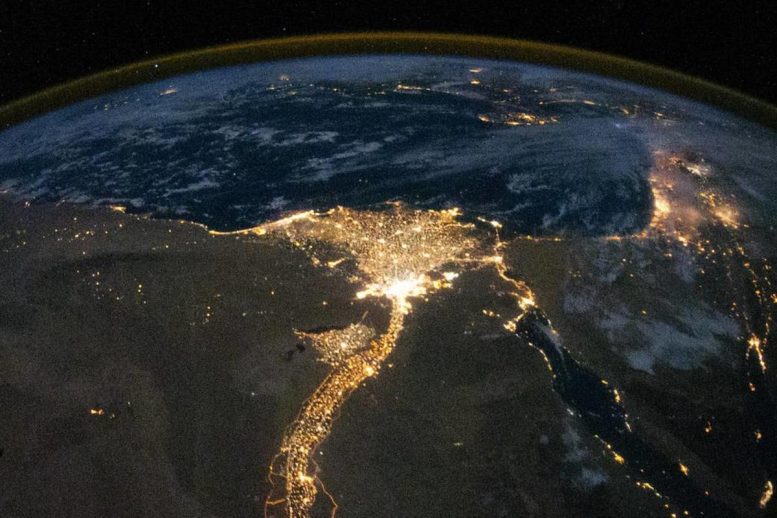
The Nile is the longest river in the world and its delta is remarkable from outer space. Credit: NASA
According to new research from the USC Viterbi School of Engineering, the Nile River Delta, which is crucial for the survival of 60 million Egyptians who rely on it for all aspects of life, is facing an existential threat from extensive heavy metal pollution, coastal erosion, and seawater intrusion. Additionally, the delta serves as a vital pitstop for migratory birds along the East African flyway.
The research, headed by Essam Heggy of the USC Viterbi Innovation Fund Arid Climates and Water Research Center, was in the American Geophysical Union (AGU) journal Earth’s Future.
The impact of the pollution is especially pronounced in Egypt, the most populous and arid nation downstream of the Nile, which depends entirely on the river as its only source of water for drinking and crop irrigation. The country currently faces one of the highest water budget deficits in Africa after decades of compensating for dwindling water supplies with intensive, large-scale wastewater reuse, the consequences of which have been understudied until now.
“You have roughly the combined populations of California and Florida living in a space the size of the state of New Jersey that is increasingly polluted by toxic heavy metals,” said Heggy. “Today, the civilization that thrived in a scenic waterscape for over 7,000 years must face the reality of this irreversible large-scale environmental degradation.”
For the study, researchers from the U.S. and Egypt analyzed grain size and pollution levels of eight heavy metals in samples of bottom sediment collected from two branches of the Nile River Delta. Key findings included:
- Sediment at the bottom of the Nile River is highly polluted by heavy metals like cadmium, nickel, chromium, copper, lead and zinc.
- Contaminants primarily come from untreated agricultural drainage and municipal and industrial wastewater. Without proper treatment of recycled water, concentrations of heavy metals increase and are permanently embedded in the riverbed unlike organic pollutants which naturally degrade over time.
- Heavy metal concentrations could be exacerbated by increased damming of the Nile. Mega-dams built upstream disrupt the river’s natural flow and sediment flux and thus adversely affect its ability to flush contaminants out into the Mediterranean Sea, leaving toxins to build up in bottom sediment over time.
Much of the heavy metal contamination is irreversible, the researchers said, but science-based conservation measures suggested by the study can slow environmental degradation and hopefully recover the Nile River Delta ecosystem.
“The aggravating water stress and the rapid population growth in Egypt, reaching above 100 million, have put local authorities in a dilemma whether to provide sufficient fresh water for the thirsty agricultural sector to secure the food supply through reusing untreated agricultural drainage water or to preserve the health of the Nile River,” said Abotalib Z. Abotalib, a postdoctoral researcher at USC Viterbi and co-author of the study. “The balance is challenging, and the consequences of both choices are measurable.”
“Our study underscores the need for more research on the environmental impacts of untreated water recycling and the change in river turbidity under increased upstream damming of the Nile,” Heggy said.
“Continued research with more sampling campaigns in this area could inform future conversations and collaborations among nations of the Nile River Basin, who have a shared interest toward maintaining a healthy Nile River system.”
Reference: “Irreversible and Large-Scale Heavy Metal Pollution Arising From Increased Damming and Untreated Water Reuse in the Nile Delta” by Abotalib Z. Abotalib, Ahmed A. Abdelhady, Essam Heggy, Salem G. Salem, Esam Ismail, Ahmed Ali and Mahmoud M. Khalil, 7 March 2023, Earth’s Future.
DOI: 10.1029/2022EF002987
The study was funded by the Zumberge Research and Innovation Fund of the University of Southern California and NASA’s Jet Propulsion Laboratory.









Be the first to comment on "“Irreversible Degradation” – Existential Threats to the Iconic Nile River Delta Identified"